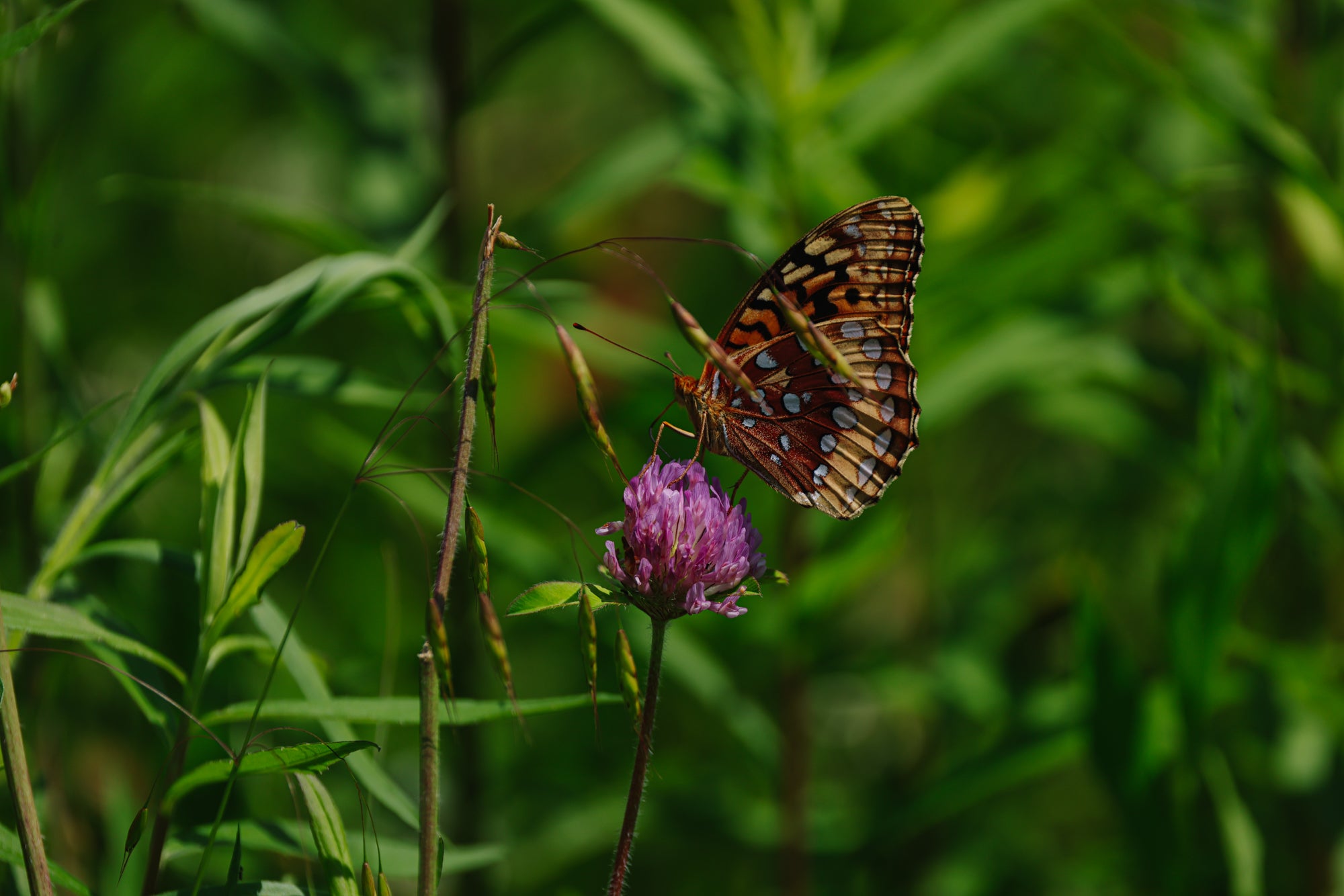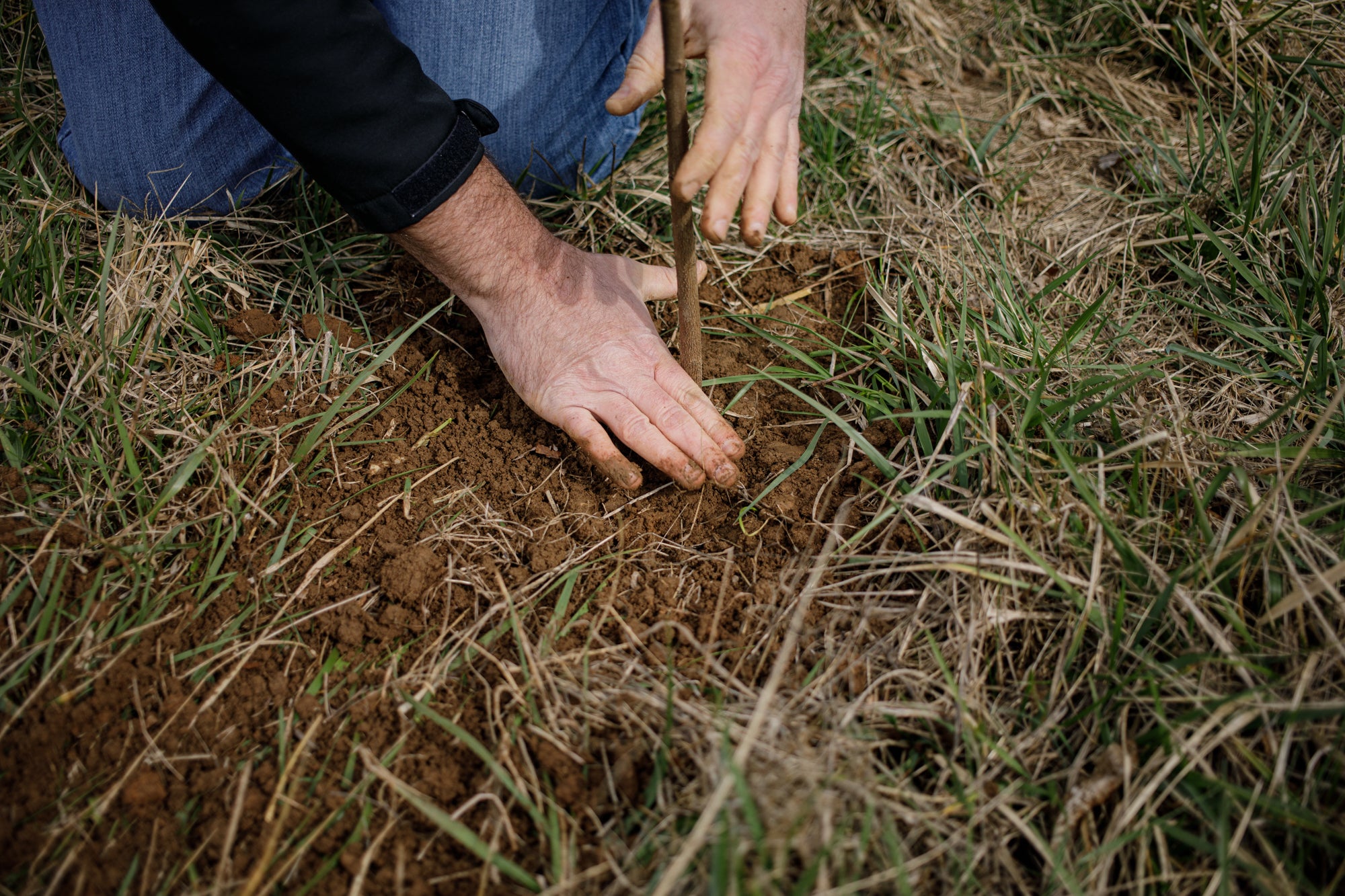Handsome Brook Farms Explores Butterflies

In ongoing efforts to understand and enhance pollinator habitats on layer hen farms, Handsome Brook Farms is delving into the world of butterflies through our Regenerative Egg Farming Project. In “Handsome Brook Farms Celebrates Pollinators,” we explored the impact of our pasture-raised hen model on pollinator habitats. We discussed how Handsome Brook Farms’ regenerative practices, including managing organic pasture land and incorporating natural fertilization from hens benefit a variety of pollinators and support biodiversity.
Here, we’ll delve into the butterfly species identified in an initial survey on five research farms in Kentucky. Butterflies belong to the order Lepidoptera, which also includes moths. All butterflies fall under the Superfamily Papilionoidea, comprising six recognized families: Hesperiidae, Lycaenidae, Nymphalidae, Papilionidae, Pieridae, and Ridionidae. We recorded five of these families in our surveys. This survey offers insights into their ecological roles and future research directions.

Survey Overview
Our initial survey was conducted during summer's peak, in sunny, clear weather, and when outside temperature was over 60°F. The survey aimed to capture a snapshot of butterfly activity and preferences. The preliminary data did not reveal substantial differences between the control and experimental farms but provides a crucial starting point for understanding butterfly behavior and habitat preferences.
Species Observations
Despite the lack of significant variations between our research farms, we noted some interesting trends in butterfly preferences. The data indicates that butterflies are particularly fond of clover species, with a marked preference for white clover. Crimson clover, a common forage grass for hens, also attracted a notable number of butterflies.
Baseline Data Insights
Establishing a baseline is essential for any ecological study. Our survey indicates a moderate presence of butterflies, which we hope to increase through habitat enhancements and conservation efforts. By identifying plants that butterflies prefer, such as white and crimson clover, we can tailor our future planting strategies to create more butterfly-friendly environments.
Butterfly Family Distribution
The survey recorded various species, each contributing uniquely to the biodiversity of the area.

Whites, Sulfurs, and Yellows (Pieridae) were the most frequently observed, making up nearly one-third of the butterfly population in our survey area. Blues, Coppers, Hairstreaks, and Harvesters (Lycaenidae) followed, accounting for over one-fifth of the sightings. The Brush-footed Butterflies (Nymphalidae), Swallowtails (Papilionidae), and Skippers (Hesperiidae) were present in smaller but still significant numbers.
Pollination and Its Impact on Food Production
Butterflies play a crucial role in pollination, which directly impacts food production.
Different butterfly species contribute to pollination in varying ways:
- Whites, Sulfurs, and Yellows (Pieridae): Commonly found in agricultural areas, these butterflies often pollinate vegetable and fruit crops, directly supporting food production.
- Blues, Coppers, Hairstreaks, and Harvesters (Lycaenidae): These smaller butterflies often have specific plant preferences, aiding in the pollination of certain crops and wild plants, which can enhance local biodiversity and crop yields.
- Brush-footed Butterflies (Nymphalidae): Known for their varied habitats and feeding behaviors, these butterflies can pollinate a wide range of plants, contributing to biodiversity and the health of ecosystems.
- Swallowtails (Papilionidae): Their large size and strong flight abilities make them effective pollinators over greater distances, helping to cross-pollinate plants and contribute to genetic diversity in crops.
- Skippers (Hesperiidae): Skippers' rapid flight and preference for grassy habitats make them important pollinators for forage crops and grasses, benefiting both wild ecosystems and agricultural lands.

Butterfly Pollination and Hen Health
The presence of butterflies and their role in pollination can significantly impact hen health, both directly and indirectly. Pollinated plants produce higher yields of seeds, fruits, and vegetables, which can be used as feed for hens. A diverse and abundant food supply helps maintain the nutritional health of hens, contributing to better egg production and overall well-being.
Interestingly, butterfly behavior on farms goes beyond just pollination. Butterflies are known to engage in “puddling” behavior, where they seek out mineral-rich sources, including excreta, to complement the sugars they obtain from nectar and flowers. On pasture-raised layer hen farms, this can create a fascinating symbiotic relationship: the hens contribute to the dietary needs of butterflies, while the butterflies assist in pollination, which in turn benefits the plants that feed the hens.
Moreover, butterflies are part of a healthy ecosystem that supports other beneficial insects and microorganisms. A balanced ecosystem with diverse plant and insect life can reduce pest populations naturally, decreasing the need for pesticides. This results in a healthier environment for free-ranging hens, promoting their health and the quality of eggs they produce.

Future Research Directions
Given that our survey was limited to a single season, we plan to conduct additional surveys in the fall to capture seasonal variations in butterfly activity. This will help us understand whether different butterfly species exhibit distinct preferences at different times of the year. Additionally, conducting multiple surveys will provide more robust data and help us identify any subtle trends that may have been missed in our initial assessment.
While our preliminary butterfly survey did not reveal significant differences between control and experimental plots, it has laid a solid foundation for future research. The preference of butterflies for white and crimson clover is an exciting finding that we plan to explore further. As we continue our grant project, we anticipate that the number of butterflies will improve, enhancing the biodiversity and ecological health of our survey farms.
By understanding the preferences and behaviors of butterfly species, we can take informed steps to support their populations and ensure that these beautiful pollinators continue to thrive in our ecosystems.



